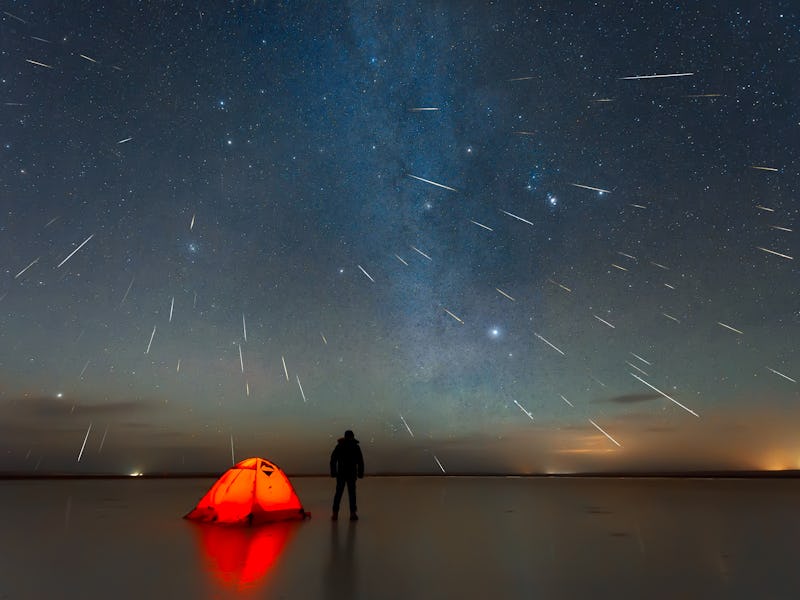You need to see the Geminid meteor shower this weekend
Bright streaks will rain across the night sky.

CELESTIAL OBJECTS COME AND GO FROM OUR VIEW IN THE NIGHT SKY. Whether it be the Full Moon, a meteor shower, or just the best night to see Mars, we're here to direct your eyes skyward and tell you to look up and appreciate the wonders of space from Earth.
This week, we're asking you to take advantage of the last major meteor shower of the year. The Geminid meteor shower will peak on the night of December 13, 2020, and last through Sunday until the early hours of Monday morning, giving sky gazers one last spectacular light show in the skies.
Meteor showers are created from the bits of debris that fall from comets and asteroids. As these rocky bodies of frozen gas, dust, and other material travel toward the Sun, the star's powerful gravitational pull can weaken them, breaking them down as they draw near.
The dust trail from comets forms a train of debris along the path of their orbit, and Earth passes through these trains each year during its own trip around the Sun.
Over 100 meteors are recorded in this composite image taken during the peak of the Geminid meteor shower in 2014.
Asteroids and comets are thought to be made of material dating back to the formation of the Solar System, making them important fonts of information about how our cosmic neighborhood came to be. Crucially, some of that dust interacts with Earth's atmosphere and disintegrates — forming the fiery streaks that we observe in the sky as meteor showers.
The Geminids originate from 3200 Phaethon, which is considered to either be an asteroid or an extinct comet. The meteor shower appears to come from the constellation Gemini, hence why it was dubbed Geminids.
The Geminid meteor shower is usually a highlight for celestial enthusiasts as it always puts on quite the show. It's also quite fast, with meteors traveling at 78,000 miles per hour.
Geminid meteors shower downward in this composite image taken over several hours on a December night in a remote part of Virginia.
The shower usually peaks at 50 meteors an hour, but on certain occasions, sky watchers have seen up to 150 meteors an hour.
This year, the Geminids happen to coincide with a New Moon, providing optimal viewing for these bright, fast balls of fire in the sky. Nighttime observers can expect to see around 60 meteors an hour on Sunday night, according to NASA.
How to watch the Geminids:
The best time to look out for the Geminids is at 2 a.m. Eastern on Sunday night regardless of where you are in the world. You don't need any special equipment either, just a watchful eye on the sky.
It is best if you are located in a dark area with minimal light for better viewing of the shower.
If you live in a crowded city like New York, it is best to get as high up as possible in order to minimize light pollution. You might want to try to view the Geminid shower from a balcony or rooftop, for example.
You also want to block out any light coming from screens of electronic devices, or flashlights and allow your eyes to get accustomed to the darkness for around 30 minutes before you look up.
This article was originally published on